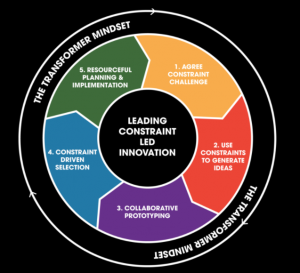Compare the examples of networked communities you focused on. What are several cognitive and social affordances of membership in these networked communities? How might understanding of a math or science misconception be addressed in these technology-enhanced environments? Name the misconception and describe it in your post, drawing upon the reading(s) you did for the social construction of knowledge.
I can honestly say, I was excited to delve into the networked communities of the Exploratorium and various virtual field trips and web-based expeditions.
- The Exploratorium believes that “The Science of Sharing” experiences aren’t just about play but importantly thinking about critical challenges that can lead to knowledge and reflection of the worlds pressing problems.
- Various Virtual Field Trips and Web-Based Expeditions
Both of these networked communities have students engaged in practical and discovery activities which can lead to deeper understanding. Gutwill, J. P., & Allen, S. (2011) stated that experimental inquiry games, similar to tasks in Exploratorium, culminate two inquiry skills:
- Proposing actions: making a plan or asking a question at the start of an investigation
- Interpreting results: making observations, drawing conclusions, or giving explanations during or after an investigation. Furthermore, Gutwill, J. P., & Allen, S. (2011) recognized several key principles when students are embodied in the design of authentic learning experiences in math or science:
- Builds on on learners prior knowledge
- Teaches through modeling, scaffolding and fading
- Identifies skills explicit
- Supports metacognition
- Supports collaboration
- Strikes a balance between choice and guidance
- Places realistic demands on teachers
I found that principle of finding “ a balance between choice and guidance” is the true essence of STEM. Earlier in this course, Confrey stated, “children develop ideas about their world, develop meanings for words used in science, and develop strategies to obtain explanations for how and why things behave as they do” (Confrey, 1990, p. 3). If this is true, teachers need to promote “change in pupils’ ideas is to show pupils the limitations of their discrepant event” (p.89). During a PL session for STEAM, we were given makerspace materials to create projects, and we were given time to consolidate with our group to make the project. Right before we started we told that we could “take” 1 item from someone elses group to enhance or better our own project. Unbeknownst to us, a major component for our project was taken! Morgan, A., & Barden, M. (. e. (2015) Constraint-Led method and mindset that embraces constraint when developing new ideas.

This approach to addresses scientific content in an area where misconceptions are held, then through leading through constraints drives many students to reconstruct their thinking. Students can deconstruct their knowledge and reconstruct their thoughts using critical thinking and logical reasoning. Finally, Gutwill, J. P., & Allen, S. (2011) concluded that learners who were engaged in activity structure within a networked community tended to make correct interpretation after instruction (p. 149).
Driver, R., Asoko, H., Leach, J., Scott, P., & Mortimer, E. (1994). Constructing scientific knowledge in the classroom. Educational researcher, 23(7), 5-12
Gutwill, J. P., & Allen, S. (2011). Deepening students’ scientific inquiry skills during a science museum field trip. Journal of the Learning Sciences, 21(1), 130-181
Morgan, A., & Barden, M. (. e. (2015). A beautiful constraint: How to transform your limitations into advantages, and why it’s everyone’s business. Hoboken, New Jersey: John Wiley & Sons, Inc.
Mary, I love so much about this post. I want to save it and keep coming back to it to remind myself about many important ideas. I am super intrigued by the graphic! What is your experience with it?
Allison,
I appreciate you saying that about my posting, I felt I was everywhere!! There was so much to cover, but I kept gravitating back to “A beautiful Constraint”.
I don’t know about your classroom, but I have those few students that have to be “perfect” and struggle to change their design/artwork/story. In saying that, just by adding or taking away an element/constraint allows for students to generate ideas. As Morgan, A., & Barden, M. (. e. (2015) stated, “We Can-If” questions can probe and challenge the learner to be more innovating.
I often do this in my student’s math journals. After they come up with the answer, I either add or take away element to see if they fully understood the concept or if they had any misconceptions. I would like to use more probing “We Can-If” statements in Science.
How can you challenge design thinking within a networked community?
Thanks again for your reply.
~Mary
Hi Mary,
I really liked your comment that “I found that principle of finding ‘a balance between choice and guidance’ is the true essence of STEM.” Could not agree more!
Excellent posting about the value of the Exploratorium and web-based expeditions. Thanks for your thoughts!
Hey Mary,
That situation in which your group had a key component taken sounds like an incredibly problem solving and knowledge building activity. Definitely forces the group to come at the issue from a different angle.
I feel like this sort of challenge could be beneficial for our students, although probably more towards the high school level. Thinking of doing that to my own 5th graders would undoubtably result in tears, and a number of students shutting down.
You mentioned above that your post is a little ‘all over.’ I must say that I appreciate how you tried to comment on so many different, related areas. Great synthesis and connections to earlier in the course.